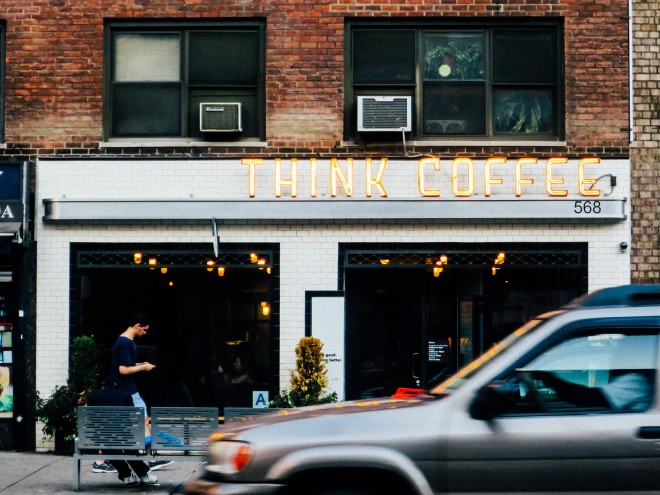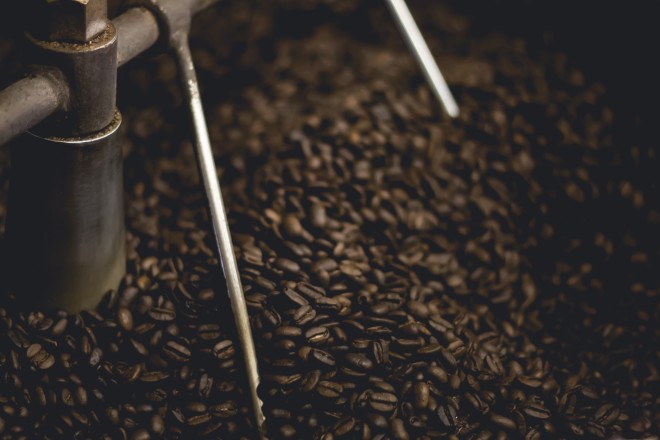The Most Expensive Coffee In The World – Can You Afford It?

The best, and often most expensive, coffee may be found at local coffee shops.
Coffee drinkers enjoy a plethora of health benefits. Coffee not only provides a caffeine boost, but studies show it can stave off depression and keep some illnesses at bay.
So, we wondered, does the type or brand of coffee matter? Are you someone who’ll brew an instant pot one day and an exclusive hand-ground blend another day? Does the quality of the coffee count?
We think it does. In our opinion we’d rather sip a fine coffee any day. So, we decided to look at the most expensive coffee in the world and ask the question, “Can you really afford it?”
Coffee aficionados search the Internet daily purchasing coffee from coffee shops worldwide. (tweet this) Whole beans, fresh ground – it’s all out there.
With thousands of different types of coffee, you are certain to find a cup you love. For diehard coffee drinkers, it’s all about the beans, the roasting, the country of origin, the aroma, the flavor and of course the taste. Does price matter?
Let’s look at the most expensive coffee in the world.
The Origins of Kopi Luwak
Cat poop, or Civet Coffee, comes from Indonesia. As the most expensive coffee in the world, it is also one of the rarest.
Kopi means coffee, and Luwak means Civet which is a small, cat-like, nocturnal mammal that lives in the tropical rain forests.
By now you might be wondering why Kopi Luwak is called cat poop coffee. Here’s the story:
- In the middle of the 19th century, the Dutch ruled Indonesia, and at that time, coffee crops were planted in Sumatra and the Java islands.
- The Dutch imported pure Arabica crops and planted them in the Indonesian mountains.
- They didn’t let local farmers use the beans.
- Soon thereafter, the farmers noticed the wild civets eating and leaving the undigested Arabica beans in their poop.
- The farmers decided to take the beans out of the civet dung and make coffee with these beans.
- Much to their surprise, they liked this coffee better than the original Arabica coffee.
- Word spread, and Kopi Luwak was born.
The Making of Kopi Luwak
Your next question is probably, “How do they harvest these beans today?” Well, civets love coffee cherries.
What are coffee cherries? Coffee trees produce coffee cherries that turn bright red when ripe and ready to pick. The coffee beans are actually inside the coffee cherries.
Coffee begins as a fragrant white flower and turns into marble-sized green cherries. Each cherry consists of a couple of beans. Months later, after the fruit ripens and turns into darkish-red cherries, it can be harvested.
At night, civets eat these cherries, and after fermenting in their stomachs for 24 hours, the undigested beans are excreted in their poop.
Locals wash and clean the beans. They then sun dry them and roast them.

Coffee has many health benefits, and civet coffee leads the pack.
The Health Benefits of Kopi Luwak
Along with its exotic taste, Kopi Luwak has many health benefits and is enjoyed by coffee lovers worldwide. (tweet this) Let’s look at a few of those:
Kopi Luwak protects your teeth. Because of its anti-bacterial properties, it helps keep your teeth clean and bacteria free. It’s even been said that drinking a cup of civet coffee a day can help prevent oral cancer.
Kopi Luwak is good for ulcer patients. This coffee has a low acidic concentration making it idea for ulcer patients and people suffering from digestive issues.
Kopi Luwak may prevent cancer. According to a Harvard study, people who drink this expensive coffee may limit their chances of getting cancer.
Kopi Luwak can help control diabetes. Unlike regular coffee which can suppress the body’s insulin resistance, civet coffee can be helpful for Type 2 Diabetes patients.
Kopi Luwak reduces muscle pain. Try drinking two cups of this coffee after your workout to reduce your muscle pain.
Kopi Luwak may be able to prevent neurological disorders. Some say civet coffee can prevent cell damage that is associated with Parkinson’s disease and control brain inflammation linked to Alzheimer’s.
Finding Kopi Luwak
Now that you’re convinced you’d like to try this expensive coffee, how do you find it?
High quality Kopi Luwak comes from a rare coffee bean. With the high demand for this coffee, imitations have sprung up.
You want to avoid fake Kopi Luwak at all costs. Only purchase it from authorized sellers from Indonesia.
Stay away from the bulk aisles at your local store, and avoid purchasing cheaper imitations of it. Real beans are, and always will be, very expensive.
Purchase this coffee in small batches. If you like the taste, and you determine it’s authentic, you can purchase more.
To help you determine the authenticity, look for coffee suppliers selling and advertising wild-collected Kopi Luwak. You will notice a difference between beans collected from wild civets as opposed to farmed civets.
Civets living in captivity are often force-fed coffee cherries and live in terrible conditions. The beans these civets excrete are inferior.
What’s more, you probably don’t want to support the farmers who keep their civets in inhumane conditions, force feeding them way more cherries than they’d normally eat.
Imitation Kopi Luwak
Wondering how to tell the difference between fake and real beans?
- Real beans have a leafy small. Fake ones smell like rice.
- Real beans are yellow-green in color and uniform in size.
- You’ll find no black spots on real civet beans.
- The aroma is much stronger than ordinary coffee. It’s full-bodied, syrupy, earth and nutty. It lacks acidity.
- The beans are expensive. Cheap price tags mean it’s fake.
The Taste of Kopi Luwak
The beans are medium-roasted to preserve the flavors. It is less acidic than the coffee you are used to, well-balanced, strong and smooth. You’ll notice a chocolaty flavor with no bitter aftertaste. It’s nutty, earthy with a distinct aroma.
The Cost of Kopi Luwak
You’ll find the price ranges from $40-80 per cup of Kopi Luwak.
Final Thoughts
Now that we’ve looked at the most expensive coffee in the world, do you think it’s worth it? Can you really afford it?
You can by now see why Kopi Luwak is the most expensive coffee in the world, especially when it’s dependent on hand-harvesting the dung of wild civets.
Many people will agree that the coffee beans, the roasting, the grinding and the brewing matters. Like most things, it’s a matter of personal taste. How will you know if the most expensive coffee in the world is worth it?
With its exquisite taste and many health benefits, you’ll just have to try a cup, or two, or three…
Have you ever tried one of the coffees mentioned here? Have you perused local coffee shops and found a coffee you love? Share your comments below – we’d love to hear them.
Images: Patrick Tomasso and Alex Jones

Wonderfully explained!
Absolutely delicious. The first time I had Kopi Lewak was in Bali near Mount Kintimani in the rainforest out of doors… and I surely was amazed at how scrumptious this coffee really is.